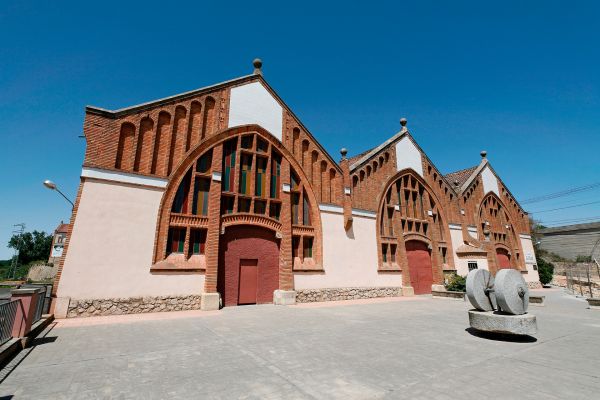The regions of the Camp de Tarragona constitute the basis for this route. A region that concentrates most of the cooperative wineries of Catalonia.
Here we see several "wine cathedrals" such as those of
L'Espluga de Francolí,
Rocafort de Queralt,
Barberà de la Conca and
Nulles. To this group we must also add the "wine cathedrals" of Priorat (Cornudella de Montsant and
Falset) and Terra Alta (
Pinell de Brai and
Gandesa).
TRADITION AND INNOVATIONTo these well known wineries others, such as that of the
Sindicat Agrícola de Vila-Rodona, that of
Pla de Santa Maria,
Santes Creus and
Aiguamúrcia must also be added. The façade of this last one evokes the rural Catalan architecture in the form of a large country manor house. Inside, we can see the traditional features, such as the wooden trusses that support the roof, and other innovative elements, such as the parabolic arches on both sides.
THE CISTERCIAN AND ROMAN TRACKWell worth visiting is the
Cistercian Monastery of Santes Creus, where the remains of
King Peter the Great lie, or the old town of Alcover, with its ancient portals and walls.
There is also evidence of the Roman past
, as can be seen in the
Villa of Centcelles, the amphitheatre of Tarragona or the so-called "long vault", a spectacular barrel vault, 93 metres long, which could have been a public agricultural store (
horreum) and which is located under the street known today as "Carrer de l'Enrajolat".
A WALK THROUGH THE MODERNIST TARRAGONAIf you are interested in Modernisme, in the city of Tarragona you will find the
Teatro Metropol, adapted by the architect Josep Maria Jujol and the
Mausoleu de Jaume I, designed by Lluís Domènech i Montaner. Outside the city are also Modernista traces - beyond the wineries- in the Modernista sanctuary of
Montserrat de Montferri.
If you visit Tarragona in spring, you must visit the
Tàrraco Viva Festival and do not leave without sampling a good "calçotada
" (typical roasted spring onions with romesco sauce) in Valls!
Have we managed to inspire you? If you have any other interesting suggestions please send them to us on Facebook or publish your photos on Instagram with the hashtag #patrimonicultural. 


